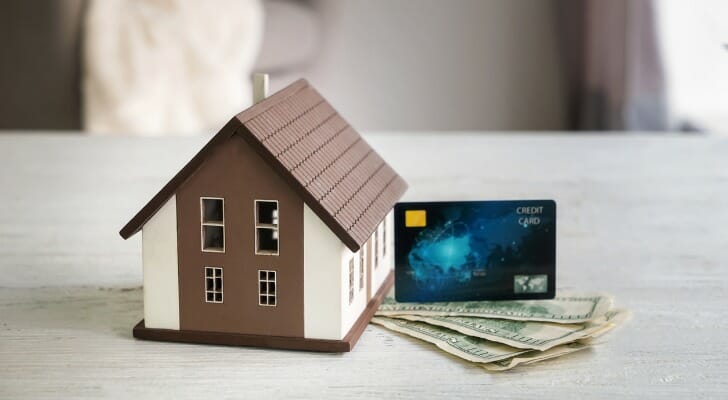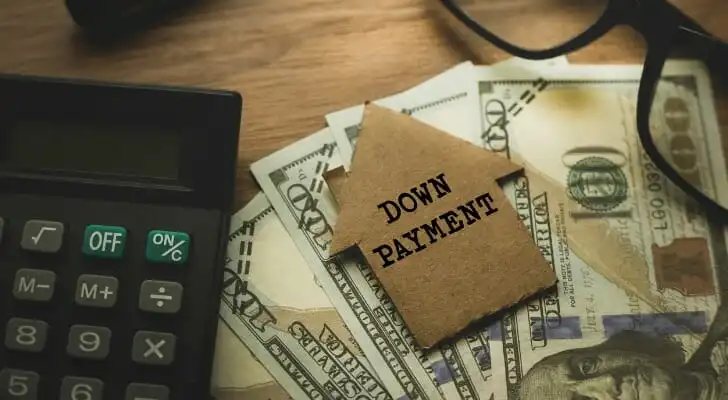A homeowner who has equity in a primary residence may be able to use a home equity line of credit (HELOC) to make the down payment on a second home. The amount of equity limits the amount of money a HELOC can provide. Lenders generally want a larger down payment on a second home and will also check the borrower’s income and existing debts before approving the HELOC. A HELOC borrower who fails to make payments on the HELOC risks losing the borrower’s primary residence to foreclosure. Consider working with a financial advisor as you explores ways to come up with down payment money.
HELOC Basics
A HELOC is a loan secured by the borrower’s home equity. A HELOC works much like a credit card, providing the borrower with a credit limit rather than a lump sum. The borrower only has to pay back the amount borrowed and funds can be used for almost any purpose, including making a down payment on a second home. HELOCs usually have variable interest rates so the payment amount can change.
HELOCs generally are set up with two periods. During the draw period lasting five to 15 years, the borrower can get funds up to the credit limit and only has to make payments equal to the interest on the loan. During the payback period, which starts when the draw period ends and may last five to 15 years, no more funds can be withdrawn and the borrower has to make payments of both interest and principal.
Lenders set the size of the HELOC credit limit based on the amount of home equity and the amount of the original mortgage. The combination of the original mortgage balance and the HELOC credit limit typically will be no more than 85% of the home’s value.
Federal law gives a borrower who signs a loan agreement secured by a primary residence three days to back out. The cancellation period starts when the borrower has signed the agreement, received a Truth in Lending form describing the interest rate and other key facts and gotten two copies of a Truth in Lending notice explaining the right to cancel. It includes Saturdays but not Sundays and lasts until midnight of the third business day. If a lender doesn’t supply the required notices, the borrower may have three years to cancel.
HELOC Down Payment Example
 When it comes to using a HELOC as a down payment on a second home, much depends on individual circumstances. A borrower’s credit score, income, other debts and amount of home equity are all major factors affecting the likelihood of being able to qualify for a HELOC that can serve as a down payment on a second home.
When it comes to using a HELOC as a down payment on a second home, much depends on individual circumstances. A borrower’s credit score, income, other debts and amount of home equity are all major factors affecting the likelihood of being able to qualify for a HELOC that can serve as a down payment on a second home.
However, in many cases a homeowner with a home valued at $300,000 and a mortgage with a remaining balance of $200,000 could qualify for a HELOC with a $55,000 credit limit. This figure is arrived at by multiplying the $300,0000 home value by 0.85, yielding a figure of $255,000, and subtracting the remaining primary mortgage balance of $200,000 from that result.
With that $55,000, the homeowner could make a 10% down payment on a second home valued at up to $550,000. If the second home will be used as an investment property, lenders may require a larger down payment of 15% or more. In that case, the value of the second home might be capped at approximately $367,000.
HELOC Down Payment Pros and Cons
Using a HELOC as a down payment lets a buyer hang on to any available cash, investing it elsewhere or keeping it as an emergency fund, rather than using it for the down payment. It can also let a second-home buyer get a lower interest rate and other advantages by making a larger down payment.
HELOCs generally have lower closing costs than other refinancing methods. And by making interest-only payments, a second-home buyer can improve cash flow during the draw period.
The major downside of using a HELOC for the down payment when buying a second home is that the borrower’s primary residence could be foreclosed on if the borrower fails to make the HELOC payments. And having a HELOC in addition to mortgages on the first and second home can make it difficult to keep up on the combined payments.
Other Second-Home Down Payment Options
HELOCs aren’t always the best choices for homeowners looking for ways to finance purchase of a second home. Here are other options.
Like a HELOC, a home equity loan is secured by the borrower’s primary residence. Compared to HELOCs, home equity loans can offer a lower interest rate that is fixed. However, home equity loans also often involve higher closing costs. And home equity loan borrowers may not have the option of making interest-only payments as HELOC borrower can during the draw-down period.
A cash-out refinance is another way to tap home equity. This approach replaces the original mortgage with a new mortgage. Some funds from the cash-out refinance pay off the original mortgage. Anything left can be used to make a second-home down payment.
Bottom Line

A HELOC can give a homeowner who has significant equity in the primary residence a source for funds to make a down payment on a second home. HELOCs feature low closing costs and the option to make interest-only payments during the draw period. However, a homebuyer who uses a HELOC for a down payment risks losing the primary resident to foreclosure. And the credit limit on a HELOC is limited by the amount of equity in the primary residence securing the loan.
Tips on Mortgages
- You can get expert help evaluating options for financing a second-home purchase with the help of a financial advisor. Finding a qualified financial advisor doesn’t have to be hard. SmartAsset’s free tool matches you with up to three financial advisors who serve your area, and you can interview your advisor matches at no cost to decide which one is right for you. If you’re ready to find an advisor who can help you achieve your financial goals, get started now.
- If you would like to get more information about using a HELOC for a down payment, look at SmartAsset’s mortgage calculator.
- The mortgage rate environment is more volatile now than ever. Check out SmartAsset’s mortgage rates table to get a better idea of what the market looks like right now.
Photo credit: ©iStock.com/Mohamad Faizal Bin Ramli, ©iStock.com/JodiJacobson, ©iStock.com/Sergey Kirsanov
